- News
- Reviews
- Bikes
- Components
- Bar tape & grips
- Bottom brackets
- Brake & gear cables
- Brake & STI levers
- Brake pads & spares
- Brakes
- Cassettes & freewheels
- Chains
- Chainsets & chainrings
- Derailleurs - front
- Derailleurs - rear
- Forks
- Gear levers & shifters
- Groupsets
- Handlebars & extensions
- Headsets
- Hubs
- Inner tubes
- Pedals
- Quick releases & skewers
- Saddles
- Seatposts
- Stems
- Wheels
- Tyres
- Tubeless valves
- Accessories
- Accessories - misc
- Computer mounts
- Bags
- Bar ends
- Bike bags & cases
- Bottle cages
- Bottles
- Cameras
- Car racks
- Child seats
- Computers
- Glasses
- GPS units
- Helmets
- Lights - front
- Lights - rear
- Lights - sets
- Locks
- Mirrors
- Mudguards
- Racks
- Pumps & CO2 inflators
- Puncture kits
- Reflectives
- Smart watches
- Stands and racks
- Trailers
- Clothing
- Health, fitness and nutrition
- Tools and workshop
- Miscellaneous
- Buyers Guides
- Features
- Forum
- Recommends
- Podcast
review
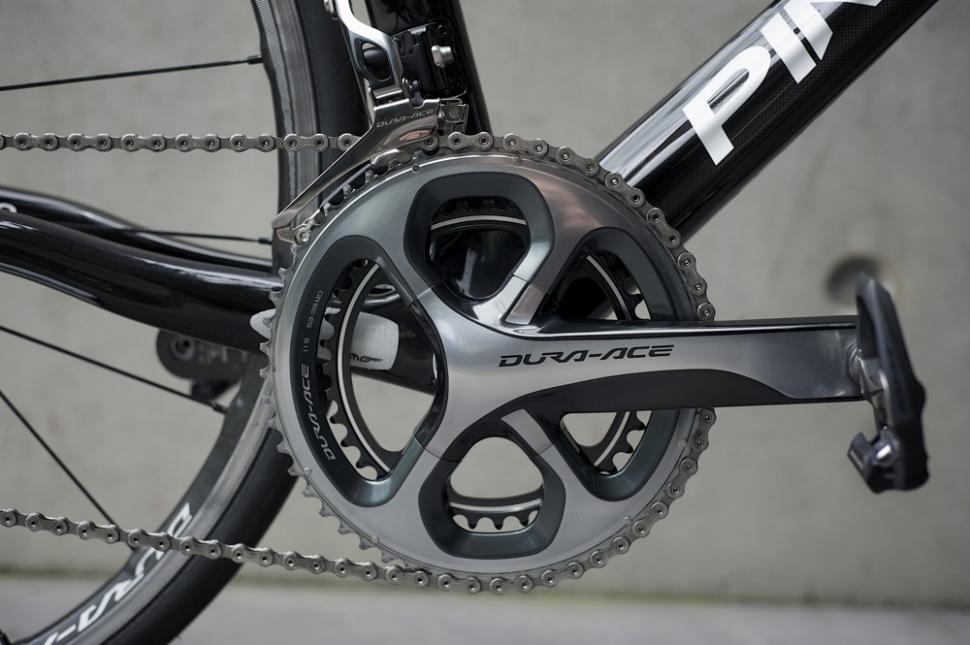 Shimano Dura-Ace 2013 27
Shimano Dura-Ace 2013 27£1,814.92
VERDICT:
Light shifting, powerful, well-modulated braking – Shimano have made their best groupset even better
Weight:
0g
Contact:
www.madison.co.uk
At road.cc every product is thoroughly tested for as long as it takes to get a proper insight into how well it works. Our reviewers are experienced cyclists that we trust to be objective. While we strive to ensure that opinions expressed are backed up by facts, reviews are by their nature an informed opinion, not a definitive verdict. We don't intentionally try to break anything (except locks) but we do try to look for weak points in any design. The overall score is not just an average of the other scores: it reflects both a product's function and value – with value determined by how a product compares with items of similar spec, quality, and price.
What the road.cc scores meanGood scores are more common than bad, because fortunately good products are more common than bad.
- Exceptional
- Excellent
- Very Good
- Good
- Quite good
- Average
- Not so good
- Poor
- Bad
- Appalling
Shimano's new version of their top-level Dura-Ace groupset is comfortably their best yet with an extra sprocket taking it up to 11-speed, ultra-light shifting and improved braking.
We first rode 9000 Series Dura-Ace last June in Belgium and we were impressed, but we didn't get our hands on a set to review properly until early November. Since then, we've been getting in plenty of miles on the new kit to see how it stands up to regular use on our own local roads. And bearing in mind the dire weather we've had over the past couple of months, we'd say it has been a pretty demanding test period.
To save you skipping back and forth to our previous article or to Shimano's website for tech details, we're going to include all that information here along with our review findings, so you can treat this piece as our definitive guide to Dura-Ace 9000.
The price at the top (£1,814.92) includes STI Dual Control levers, both derailleurs, chainset, bottom bracket, brakes, cassette and chain. The front mech, chainset and cassette are available in different versions at different prices; we've used the cheapest prices to make up that total, so you might have to pay a bit more depending on the exact components you want. We've included the pedals in our review (below) but not in that overall price total.
I'll put my cards on the table right at the start: I reckon this is the best groupset out there. It's lightweight, the shifting is smooth and requires very little effort, the braking is powerful and easy to modulate... It's not cheap, of course, but for a no compromise, top-level groupset, it's not ridiculously expensive either.
If that all sounds a bit gushing, I'll try to explain why it's so good...
Find the Shimano Dura-Ace 9000 groupset online
Find a Shimano dealer
STI Dual Control lever ST-9000
£469.99
Weight 365g

Shimano say With smaller, sleeker hoods, the 11-speed compatible ST-9000 STI units deliver improved ergonomics for better rider comfort and control, with reduced lever stroke and lighter action
* SIS indexed shifting
* 11-speed design
* Smaller hoods improve ergonomics from all positions
* Release lever stroke reduced by 30% compared to ST-7900
* Polymer-coated cables for the smoothest shifting
* Shifting effort up to 47% lower than RD-7900 [the rear mech of the previous generation Dura-Ace]
* 43% less effort at the end of the lever stroke than FD-7900 [the front mech of the previous generation Dura-Ace]
We say Shimano have reshaped the levers to make them more like their Di2 levers. The diameter of the bracket is considerably reduced from the previous generation (7900) Dura-Ace and everything fits together very smoothly.
I've got large hands and I find the reduced size to be an advantage. People with smaller hands are likely to notice it even more. You can really get a tight grip right around the lever bracket when you're riding out of the saddle, with more overlap between your thumb and fingers, so you get loads of control when you're throwing the bike around on a climb or in a sprint. You just feel like you have more command over that front end. The rise at the front is high too, so your hands are never going to slip off.
It's really simple to find the inner lever whether you're on the hoods or on the drops, even if you're wearing big winter gloves (and I have been recently). You'll never push both levers across accidentally.
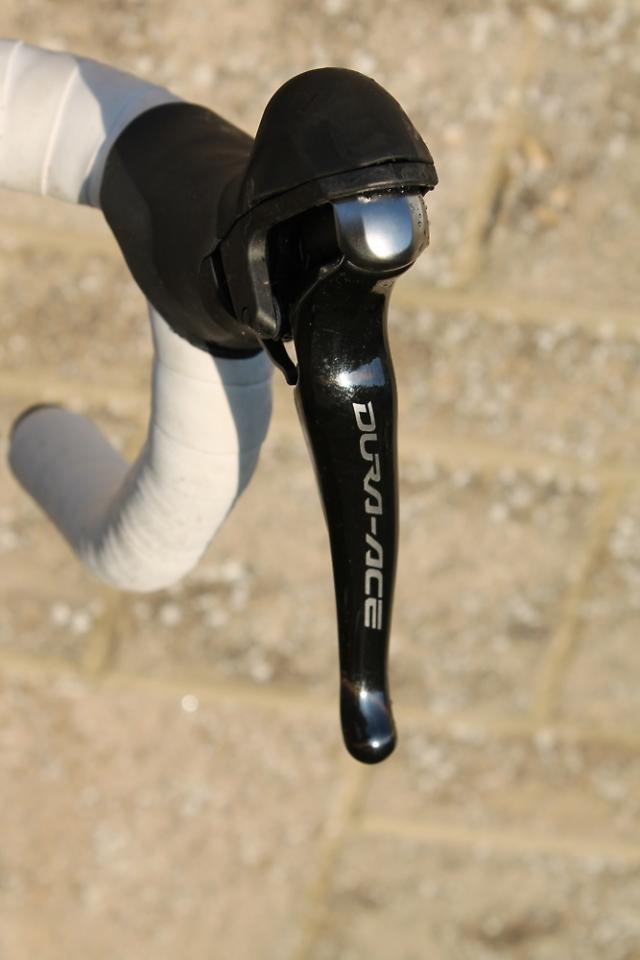
The next big difference you notice is the lightness of the shifting action. As you can see (above), Shimano put figures on it. What those numbers actually mean in the real world is that it's really, really easy to swing the levers across to change gear, but you still get a definite click to tell you what's going on.
Shimano have also reduced the release lever stroke (the stroke of the inner lever) considerably. What's the advantage to all this? It's not going to make you ride any faster, it's just... better. These details add to the overall improved feel.
Shifts are completely reliable and very smooth, even if you're downshifting while standing on the pedals on a steep climb. There's no clunkiness whatsoever. Shimano really had that sorted before and it's a trait they've carried over here.
Braking is more powerful than previously. Shimano have moved the brake lever pivot further from the bar and extended the brake lever slightly so the power is easily controlled whether you have your hands on the hoods or on drops (plus, they've altered the callipers and the cables, see below).
Reach to the levers is easily sorted by peeling the cover back and adjusting a screw in the top of the body. You just tighten it to dial the levers in towards the bar. It's a very neat and tidy.
Rear derailleur RD-9000
£189.99
Weight 158g
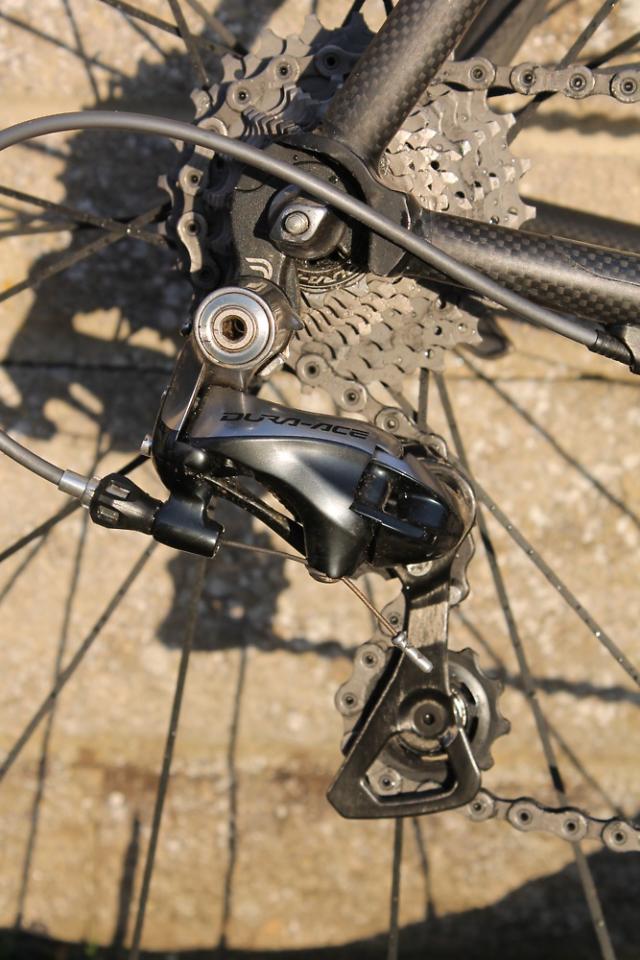
Shimano say The 11-speed Dura-Ace rear derailleur has been redesigned for lighter operation with the help of new low-friction polymer-coated cables. Shifting effort is now more even across the range, with similar force required at both ends of the cassette.
* Fast and accurate shifting
* 11-speed design
* Maximum sprocket 28t
* More equal shifting effort through the range
We say Shimano have redesigned the rear mech with a new spring mechanism that provides 'more equal' shifting. Usually, the higher up the cassette you go, the harder it is to shift. With the new 9000 Series rear mech, there's not much difference in the shifting wherever you are on the cassette.
Shimano use new inner cables here. Instead of a PTFE coating on the outside of the cable as before, Shimano use a new polymer coating that reduces the sliding resistance to achieve lighter and quicker shifting.
According to Shimano, the wide link design of the rear mech reduces shifting deflection and increases rigidity giving precise shifting over an extended time period.
If you don't really notice your rear mech too much, that's a good thing, and I've had to do nothing here. I've been using the system for a couple of months and I've not had to adjust anything yet. The indexing didn't even go out of synch after a few days, which is normal with initial cable stretch. Maybe I've just been lucky – who knows? – but it has worked perfectly so far.
Front derailleur FD-9000
£89.99-£99.99
Weight 66g

Shimano say With a revised actuation ratio in combination with the ST-9000 shifter and polymer-coated cables, the new Dura-Ace front derailleur delivers both a shorter stroke at the lever and reduced effort.
* New designed pull arm for more direct and easy shifting
* New support bolt for more stable contact to the frame
We say The front mech is significantly changed from what has gone before. For a start, it's much, much taller than previously. The newly designed pull arm provides more leverage to help lighten the upshifting. The downshifting could hardly be easier. Plus, the front mech uses the same polymer-coated inner cables as the rear mech so that results in lighter shifting.
You still get a trim function (so you can move the mech across slightly to avoid chain rub without moving to the other chainring) and an elastomer strip on the inside face of the front mech's inner cage plate to stop the chain rubbing on the metal. This works well and after a couple of months it's not showing a whole lot of wear.
The capacity (the difference in size between the large and small chainrings that it can handle) is 16T. The braze on front mech is £89.99 while the band on version is £99.99.
Chainset 53/39 FC-9000
£489.99-£509.99
Weight 618g

Shimano say With a unique four-arm spider and Hollowtech II construction putting strength just where its needed, the FC-9000 chainset sets new standards for stiffness and low weight.
* New 4-arm design for same stiffness with lighter weight
* Hollowtech II construction
* Hollowglide chainrings
* 11-speed compatible
* Same bolt circle diameter for compact and traditional double chainsets means that one crankarm fits all chainring sizes
* 50-34T/52-36T/52-38T/53-39T/54-42T/55-42T
* 165/167.5/170/172.5/175/177.5/180mm
We say Ah, yeah, the chainset... It draws quite a lot of comments because it looks distinctive. Some people don't seem to like the fact that the spaces between the arms are uneven. I can't say it bothers me even slightly.
The idea is that the arms are positioned from an engineering standpoint to transfer power as best they can – taking the positions in the pedal stroke where we tend to apply most power into account – while allowing Shimano to reduce their number of arms from five to four, and thereby save weight.
Shimano reckon this is as stiff as previously, but lighter (the 7900 version, including bottom bracket, was 725g; this version, including bottom bracket, is 683g). Did I notice any difference in the rigidity when riding? Nope, certainly not.
The bolt circle diameter is 110mm whether you go for a standard (something like a 53-39T combination) or a compact (50-34T) – which makes things easier. You could ride standard chainrings at home, for example, and swap to smaller chainrings for a week in The Alps, for example, using the same cranks.
Speaking of chainring combinations, Shimano have added new 52-36T and 52-38T options this year. I have a 53-39 here but I've used 52-36 from other brands in the past and it's a winner – a great range for both steaming along on the flat and getting up steep climbs.
One other thing that's worth mentioning: the new chainrings are the same thickness as the existing 10-speed ones so Shimano don't envisage any loss in durability, and I certainly didn't notice any.
Most of the chainset options are £489.99 with the 54-42T and 55-42T options £20 more expensive.
Bottom bracket SM-BB9000
£49.99
Weight 65g
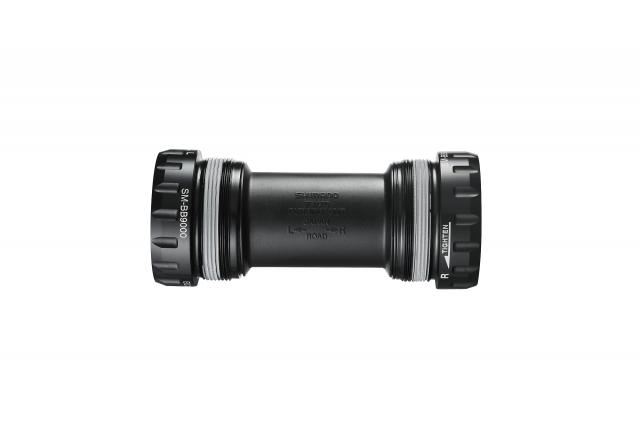
Shimano say Outside positioned bearings for better weight distribution and more stability. Bottom bracket has smaller bearings than current model for light weight.
* New improved sealing ensures 50% less drag
* Available for conventional and Press-Fit applications
We say What do you want your bottom bracket to do? Mainly
a) Get on with the job.
b) Not creak.
That's about it, really, isn't it? This ticks both boxes. It can be cool if you can service a bottom bracket easily too, but you can't do that here. It's a sealed unit so you fit it, use it until it dies, then you buy a new one.
Shimano have fitted smaller bearings than previously to reduce the weight a touch. That does mean that although old tools can be used to fit them, they'll need a new insert.
Shimano reckon that there's 50% less drag thanks to improved sealing. That sounds a lot but there's not a lot of drag to start with. Is it enough to notice? Not by me, I'm afraid, no.
It's available in both English and Italian threads, and in a press-fit option.
Brakes BR-9000
£269.99
Weight 293g (front and rear together)
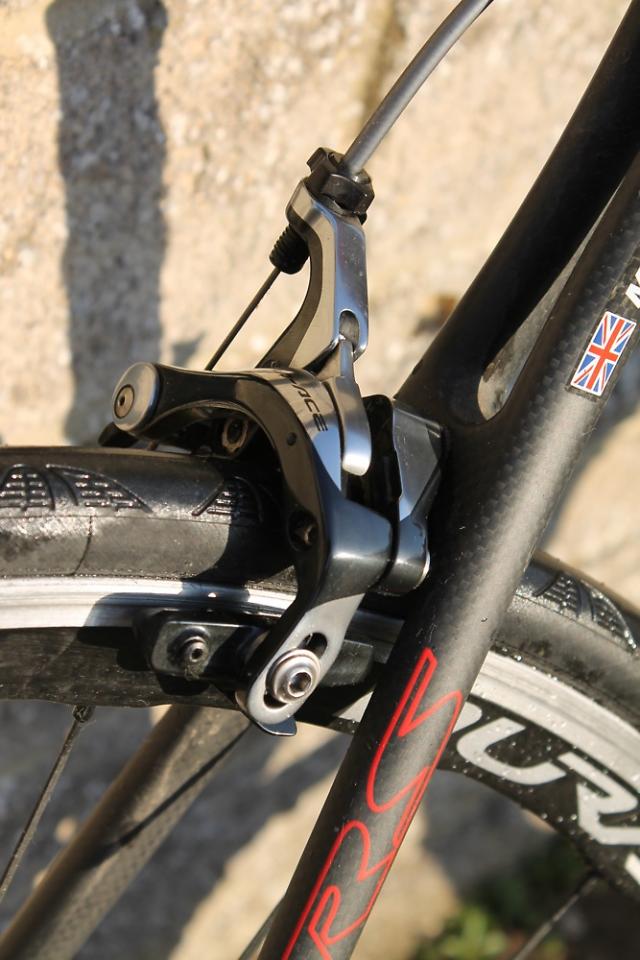
Shimano say Long, fast descents demand confidence. Dura-Ace brakes deliver, with a new symmetrical dual pivot design and twin bearings reducing pivot friction and improving efficiency and controllability. Along with new low-friction BC-9000 cables, Dura-Ace brakes give smooth, light operation with excellent modulation. Available with conventional mount or direct mount for aero road bikes (BR-9010).
* 10% more power than BR-7900
* Smooth and light operation with increased modulation
* Also available in direct mount version (BR-9010) for aero applications
We say Now these are interesting. They're built to Shimano's new SLR-EV design – in that they're an evolution of the existing SLR.
The new brake is still a dual pivot design, but rather than having one pivot in the centre, each is positioned to the side, at the top of the drop section of the arm. Shimano describe this as a 'symmetrical dual pivot brake' – and it is.
By repositioning the central pivot to the side, Shimano have shortened that brake arm. They say that this lowers friction at the pivot area and also reduces flex.
Shimano reckon the chief benefit is that the new brake design increases power by 10% with their new polymer-coated brake cables, or you get the same amount of power for less effort at the lever. That means you get improved modulation – more control at your fingertips.
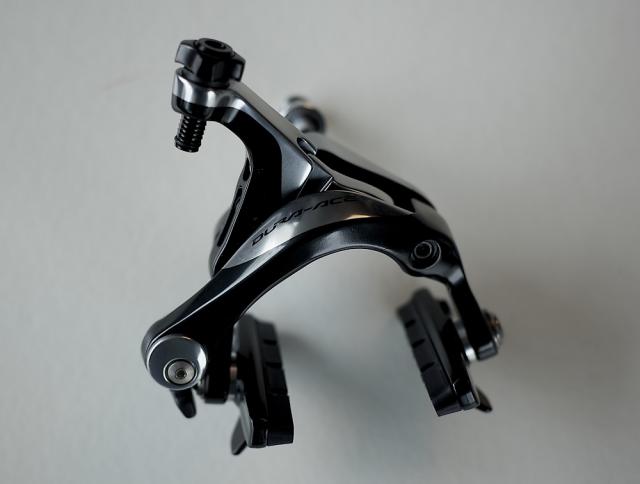
It feels to me like an increase in power of more than 10% – although I guess it's highly unlikely that Shimano would understate it. The braking here is really strong, whether your hands are positioned on the hoods or on the drops, and it was impressive before. The amount of bite on offer is one of the best features of the entire groupset, and it's incredibly easy to apply – you require very little effort through your fingers. And the more powerful the braking, the longer you can safely leave it.
You can buy the front and rear individually if you need to replace one, at £149.99 a throw.
One of the other big benefits is that Shimano can now produce a direct-mount version of the calliper. Rather than mounting via a central bolt, you get bolts that extend through the pivots and into your frame or fork. This BR-9010 version of the brakes (£154.99 per calliper) is useable on aero road bikes, for example. The design comes with an in-line cable adjuster that features a quick release.
Cassette CS-9000
£209.99-£219.99
Weight 166g (11-23T)

Shimano say Rider-tuned means Dura-Ace works the way you want it. The new 11-speed cassettes are available in a range of sizes including a wide-range 11-28 option - one cassette to use all year round. Smooth, fast shifting guaranteed.
* Carbon mid spider carrier
* Titanium sprockets (16T and bigger)
* 11-speed, Rider-tuned gear combinations 11-23T/11-25T/11-28T/12-25T/12-28T
We say The biggest development here is, of course, the addition of the 11th sprocket (feel free to add your own Spinal Tap joke here; we used all ours up when Campag went 11-speed). The width of the sprockets is the same as on a 10-speed system, but they are fractionally closer together.
The width of the freehub has been increased by 1.8mm, so it is now the same as you get with Campagnolo 11-speed which will make things easier for wheel manufacturers (although the spline pattern is still different so you can't use them interchangeably). It also means that riders with Campag-compatible wheels from manufacturers like Mavic, Zipp and so on can swap the freehub for a Shimano 11-speed one. Shimano have had to redesign their own wheels to bring them into line here.
That extra width means that you can't use a Shimano 11-speed cassette on a 10-speed hub – the hub needs to be 11-speed specific. You can, though, use a 10-speed cassette on an 11-speed hub as long as you use an extra spacer to take up the, um, extra space.
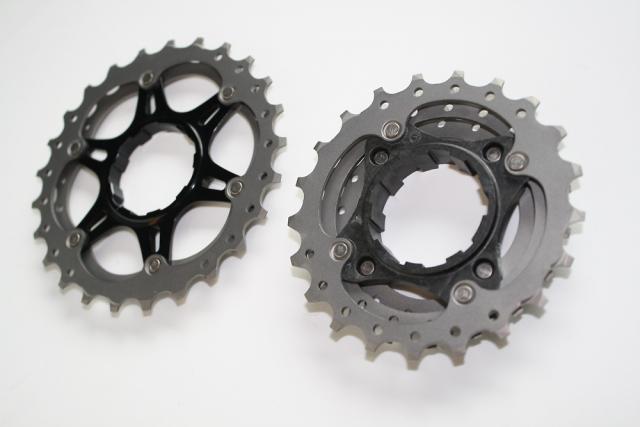
A 9000 Series cassette weighs about the same as a 7900-series cassette despite the addition of that extra sprocket, because Shimano now use a carbon mid-spider carrier rather than an aluminium one. I did wonder whether this would reduce the durability so took the cassette off to check it out. Everything looks perfectly in order. The larger sprockets are titanium, as previously, and the durability of all the sprockets seems the same as before as far as I can tell.
Cassette options are 11-23T, 11-25T, 11-28T, 12-25T and 12-28T. You have to pay a tenner extra (£219.99 rather than £209.99) for a cassette with a 28T sprocket.
Chain CN-9000
£44.99
Weight 243g (114 links)

Shimano say The new symmetrical 11-speed Dura-Ace chain uses hollow pins for low weight, PTFE coating for smooth shifts and offers increased durability.
* 11-speed
* PTFE coating
* Increased durability (vs. CN-7900)
We say Previously, the Dura-Ace chain was directional so you had to put it on the right way around. That's no longer the case, so you can't get it wrong.
The inner plates aren't slotted like they were before but the pins are hollow, and the chain gets a new PTFE plating designed for smoother shifts and increased durability. Shimano reckon it's 20% more resistant to wear than previously. I'll be honest: I haven't got a clue if that's accurate, but it seems to be wearing well. It's quiet too... not that I'm going to get too worked up about audibility.
You still need to use a pin to join the chain – there's no quick-link option. The pin is a different shape from before so you won't get it mixed up with anything else.
Pedals PD-9000
£229.99
Weight 248g
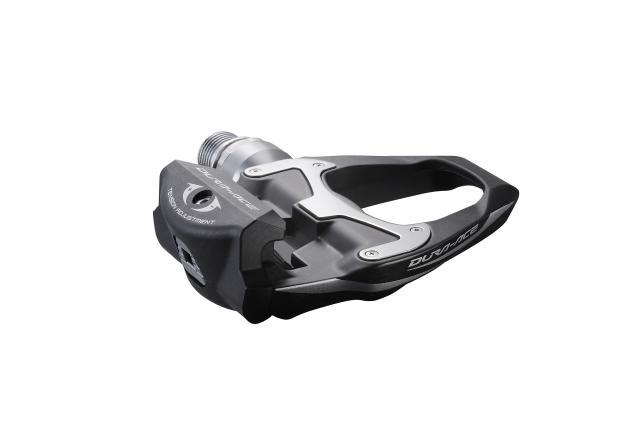
Shimano say SPD-SL pedals guarantee a reliable and efficient connection between you and the bike. Extra-wide platforms offer maximum power transfer and comfort, while wear-resistant top plates ensure durability.
* Carbon composite body
* Stainless steel top plate
* Optional 4mm longer axle
* Low weight
We say The Dura-Ace pedals have changed slightly cosmetically, but they're still made from a carbon composite body with a stainless steel pedal body plate to improve the durability, and they still spin on a three-bearing axle – two ball bearings and one roller bearing.
Oh yeah, there's now a version with an axle that's 4mm longer than standard so you can do away with that little spacer if you want to move your foot further from the crankarm.
Verdict
New 9000 Series Dura-Ace is very, very impressive. It's just a little lighter than before, but we're talking about less than 100g across the entire groupset. The major changes are the ones that you'll notice immediately and the ones that I've banged on about most: the lighter shifting and the punchier braking.
You might prefer the shift system of either Campag or SRAM, and that's likely to influence your preferred groupset, but my view is that this is the groupset that sets the standards at the moment (you're welcome to disagree, of course).
If the prices are too high for you, bear in mind that Shimano are pretty good at quickly trickling technology down the groupset hierarchy, so some of these features are likely to find their way onto cheaper components soon.
road.cc test report
Make and model: Shimano Dura Ace 9000 groupset
Rate the product for quality of construction:
9/10
Rate the product for performance:
9/10
Rate the product for durability:
8/10
Rate the product for weight, if applicable:
8/10
Rate the product for comfort, if applicable:
9/10
Rate the product for value:
7/10
About the tester
Age: 42 Height: 190cm Weight: 76kg
I've been riding for: Over 20 years I ride: Most days I would class myself as: Expert
I regularly do the following types of riding: time trialling, commuting, club rides, sportives, general fitness riding,
Mat has been in cycling media since 1996, on titles including BikeRadar, Total Bike, Total Mountain Bike, What Mountain Bike and Mountain Biking UK, and he has been editor of 220 Triathlon and Cycling Plus. Mat has been road.cc technical editor for over a decade, testing bikes, fettling the latest kit, and trying out the most up-to-the-minute clothing. He has won his category in Ironman UK 70.3 and finished on the podium in both marathons he has run. Mat is a Cambridge graduate who did a post-grad in magazine journalism, and he is a winner of the Cycling Media Award for Specialist Online Writer. Now over 50, he's riding road and gravel bikes most days for fun and fitness rather than training for competitions.
Latest Comments
- Terry Hutt 1 hour 8 min ago
I assume you can carry an e-bike battery on the tube if you leave the bike at home. ...
- chrisonabike 2 hours 9 min ago
I love it - it's a roundabout with a sculpture of a roundabout on its desk!
- cmedred 2 hours 11 min ago
From the position of the cyclist when the video starts and the position of the bike later, it looks highly unlikely that the cyclist went "into the...
- Rendel Harris 2 hours 17 min ago
To rhyme with design. I wondered this myself so looked it up a while ago, according to the founder Micki Kozuschek he and his team had a few...
- Rendel Harris 3 hours 10 min ago
It's not being pedantic at all, careless driving is successfully prosecuted (and I have been in court more than once when a driver has been...
- HLaB 3 hours 34 min ago
It's hopefully an urban myth but I heard it was designed that way on purpose, so the cyclepath captured any flooding and the busway would remain clear
- mdavidford 3 hours 36 min ago
I should imagine eating chopsticks anywhere could be potentially rather perilous.
- Rendel Harris 3 hours 54 min ago
When The Badger stopped for protesters (albeit dockworkers rather than farmers) it was their stress gauges rather than his that would have been...
- Eurodolphin 4 hours 40 min ago
Having experienced a brain injury (while my helmet only suffered a little crack) I welcome all this excellent research which looks for ways to...
- mattw 4 hours 43 min ago
Nope. Has anyone ever bought a wheel trim studded with diamonds for their car? Thought not.



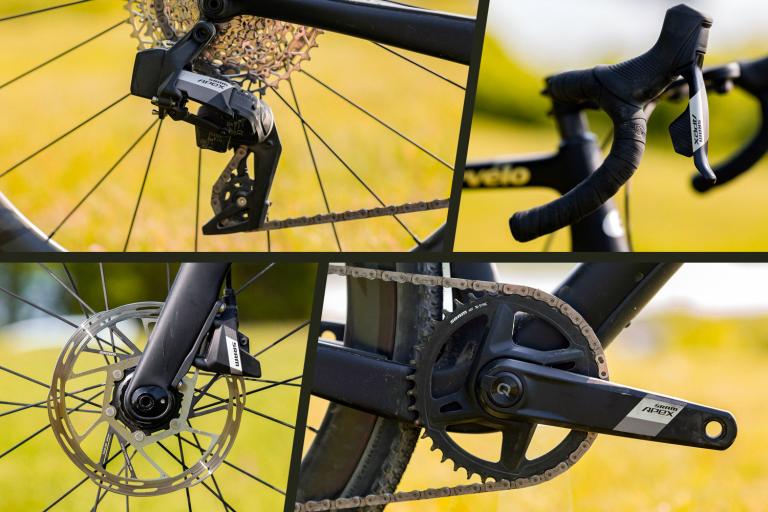
Add new comment
13 comments